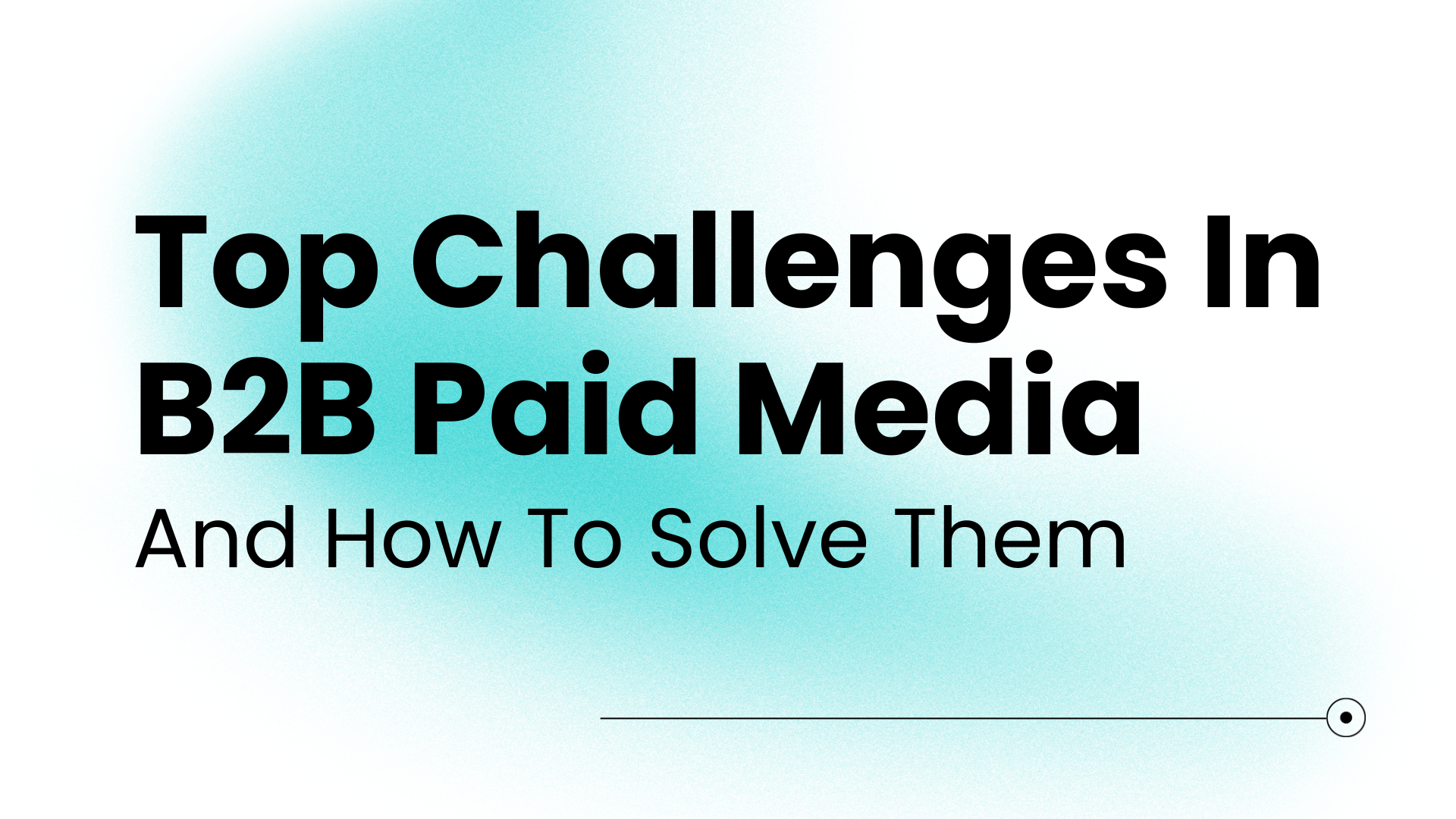A Digital Marketing RFP That Sets Your Team & Vendors Up for Success
Now more than ever, we see that our clients are under additional scrutiny regarding their marketing investments. Along with being challenged to do more with less, digital marketing teams are tasked with a deluge of procurement questions as they evaluate contracts with fine-tooth comb.
As this trend continues, we’re seeing more and more organizations inviting agencies to participate in a Request for Proposal (RFP). As selective organizations are when inviting candidates to respond, agencies can be just as picky when deciding to participate.
I’ll walk through key elements in a RFP process that get agencies excited, increase the likelihood of participation, and result in getting thoughtful, custom responses for your team’s review.
What is an RFP?
A Request for Proposal is a document that requests a formal bid from potential vendors to provide specific services.
For Digital Marketing RFPs, this most often takes the shape of organizations sharing their business objectives, and diving into how an omnichannel digital marketing strategy is a key component to meeting those objectives. In order to achieve their goals, they are looking for support from a third party to develop their website strategy.
The last thing that you want to happen is to go through the arduous process of a RFP, only to not feel confident in your decision or be left at an impasse. For that reason, we developed a guide to determining when a RFP makes sense, what to include to set your team and candidates up for success, and a clear framework for developing decision criteria to help you close out your RFP process with confidence.
Is an RFP right for your organization?
RFPs are a significant time investment for both the reviewers and the respondents. If you’re considering an RFP for digital marketing services, be sure to review the following with your internal stakeholders:
- Do we need an RFP at all?
While RFPs are increasing in the digital marketing space, more often than not, RFPs are not the best way for most organizations to evaluate potential partners. Therefore, it should not be the de facto process for all companies seeking support. RFPs makes sense when:
-
-
There are a number of 4+ internal stakeholders involved in the decision process
-
The business is complex, and the support areas needed are across multiple channels
-
You have a resource with dedicated time to run the RFP and coordinate amongst stakeholders and respondents
-
If those factors don’t apply to your team, then I’d consider a standard evaluation process. That entails filling out an agency’s contact form, going through the discovery process, and determining an agency’s fit throughout those conversations.
-
- Has your team done initial research into the type of partnership they want to procure?
The more initial research your team does, the easier it is for all parties involved. Having over ten respondents in an RFP process does not afford your team the ability to review responses thoroughly, and doesn’t allow each agency’s unique approach and capabilities to stand out. When inviting agencies to participate in a RFP, limit participants to a maximum of 5 agencies, ideally even less, and let those agencies know they were purposefully invited and why.
-
Do we understand our budget parameters?
Go into the process having a clear understanding of the budget allocated towards this initiative. It can be discouraging to throw out everything you want support from an agency on, only to have that agency come back with a proposal that falls far from what you originally planned for project pricing. By knowing what you’re ready to invest, your team and potential partners can discuss how to allocate those dollars to the highest impact areas.
- Discuss your decision criteria
Ensure you’re aligned on what attributes are requirements and what are 'nice-to-haves' in the process. Once these are defined, develop a decision criteria that weighs those factors accordingly and gives a straightforward way to score candidates against your priorities. This then becomes a resource for your direct and indirect stakeholders to understand how you came to your decision - from the marketing team, procurement, and C-suite. Jump to the ‘Making Your Decision’ section for an overview of this and an overview of the Decision Matrix Card we developed.
By aligning with your stakeholders on the above, it also helps secure the buy-in needed internally to move forward with a partner.
What to Include in Your RFP
If you asked yourself the above questions, then it should be easy to keep your RFP concise while still relaying the key information a vendor needs to develop support options.
In order to get the most out of this process, there are key items that should be provided to your candidates.
- Time for Clarifying Questions
A good, strategic partner will have follow up questions - they want to dig in and ensure they understand your business, priorities, and how you got to your current state. These questions are also a great opportunity to see how your potential partner starts developing their approach when presented with challenges.
- Direct Access to the Marketing Team
The marketing team that the vendor will be supporting needs to be directly involved in responding to clarifying questions and evaluation process. There are so many nuances and dependencies in this field that, if procurement is the primary contact and decision maker, it’s a recipe for misalignment once an agency is chosen.
- Transparency
In order for any process you take for an agency evaluation to work, you have to be willing to share information. Sharing digital marketing efforts to date, your challenges, your goals, team structure, etc. - whether discussed in a conversation or a formal submission of clarifying questions - is vitally important to ensure agencies are putting their best foot forward.
- Access to Associated Data/Accounts
If you’re going through this process, the goal is to come out of it with a long term partner. A partner with whom you can work hand in hand on strategy, and a partner whose recommendations you trust. With that in mind, wouldn’t you want to see what that agency brings to the table with your own data? The more access you’re able to provide, the better idea you’ll have of what your day to day relationship with that agency will be like. At a minimum, I’d provide account access for the finalist ahead of the final review.
- Live Review with Top 2-3 Respondents
In an effort to spare both your time and your respondents’ time, reduce the written submission to a few key elements that help you narrow in on standout candidates (ie the requirements discussed in your decision criteria in the Section “Is an RFP right for your organization?”). From there, choose a small group of finalists and let those respondents spend the bulk of their time showing you what they can do.
Not only does it take a substantial amount of time to read through written responses, it’s difficult to understand the differences between agencies through a written response alone. By spending the bulk of a time letting agencies show you how they’d approach a project, you have the opportunity to see how they’d start crafting a strategy in relation to your business goals. This is where agencies really stand out.
Making Your Decision
The clearer you outline your decision criteria, the easier you’re making it for yourself post-responses. Be sure to have a clear process and timeline for your team to conduct their evaluation and communicate that process to respondents.
If you’re making a decision by committee, a Decision Matrix will allow your team to drop in their scores across the agreed upon criteria.
💡 We’ve developed one for you to copy and adjust for your own process here
With each stakeholder having access to this scoring system, you can see how and why your team is leaning towards a potential partner, and why they are leaning towards them. Did they score them higher for understanding of their business model? They felt that agency had a better approach to the project at hand? This allows you to quantify why you’re moving forward with another agency in a way that isn’t just around budget. It also allows for better, more structured conversations in that evaluation process.
Awarding & Declining - Sharing Your Feedback
This scoring criteria creates an excellent opportunity to share where respondents shined and where they fell short. As noted earlier, transparency is a key component to getting the best responses possible, and that transparency should follow through to the closing out of your RFP evaluation. At best, your team is able to share the de-identified results of the scoring criteria to show how the agency stacked up against their peer set. If that’s not possible, sharing qualitative feedback is always appreciated.
-
Shows your awardee what you’re prioritizing in an engagement with them.
Sharing your qualitative and quantitative feedback demonstrates exactly what it is you’re most looking forward to in your partnership with that agency. It allows that agency to incorporate that feedback into an engagement scope, and lead with that at the forefront when onboarding your account team. If there were areas of hesitation before awarding that agency, it gives your new partner the opportunity to address that head on and have both teams go into your engagement confident.
- Keeps a good standing relationship with other agencies
The Digital Marketing community is a small world. You never know what may happen a year, two years, or five years from today. Honoring the time that an agency put into a response with clear and constructive feedback can pay dividends for you down the road. If there was a great respondent but there were certain elements that weren’t quite up to par, communicating that gives them the opportunity to refine that item over time, and ultimately increase the likelihood of them responding again should you ever need to revisit this process. After spending hours developing a response for your team, an agency will remember who ghosted them versus who respected their time with thoughtful feedback.
Interested in partnering with Seer as your digital marketing agency? Let's talk!
Want more posts like this? Subscribe to the Seer Newsletter:



